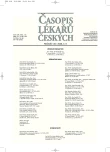Vacuum Assisted Closure Therapy – Overview of Lesson and Applications
Authors:
T. Toporcer; J. Radoňak
Authors‘ workplace:
II. chirurgická klinika LF UPJŠ, Košice
Published in:
Čas. Lék. čes. 2006; 145: 702-707
Category:
Review Article
Overview
The aim of this review was to provide a comprehensive actual overview of the Vacuum Assisted Closure therapy (VAC). VAC is new method for wound treatment. VAC is assigned especially for per secundam healed wounds. Opencell foam is placed into the wound with the evacuation drain. The wound side and foam are then covered with an adhesive drape. The evacuation drain is connected to a computerized vacuum pump. The VAC removes excess fluid, reduces the number of microorganisms and increases temperature in the wound. Mechanical stress causes granulation tissue formation and neoangiogenesis. The most of published studies present positive influence of VAC for wound healing. The newest studies present positive influence for healing of contaminated wounds, wounds after thoracic surgery, traumatic wounds and also for wounds of diabetic patients. The use of VAC for oncology patients is controversial, but there are some studies to present VAC positive effect in these cases, too. However there are a few studies to present negative complications of VAC, especially increase of microorganisms in the wound. For all that VAC is not standard for wound healing treatment now, presented studies point out that VAC can by used in generally surgery.
Key words:
vacuum assisted closure, VAC, wound healing.
Labels
Addictology Allergology and clinical immunology Angiology Audiology Clinical biochemistry Dermatology & STDs Paediatric gastroenterology Paediatric surgery Paediatric cardiology Paediatric neurology Paediatric ENT Paediatric psychiatry Paediatric rheumatology Diabetology Pharmacy Vascular surgery Pain management Dental HygienistArticle was published in
Journal of Czech Physicians

Most read in this issue
- Vacuum Assisted Closure Therapy – Overview of Lesson and Applications
- Surgical Treatment of Infective Endocarditis: 8 Year Experience
- History of the Czech Gerontology and Geriatrics
- Biological Mechanisms of Aging
